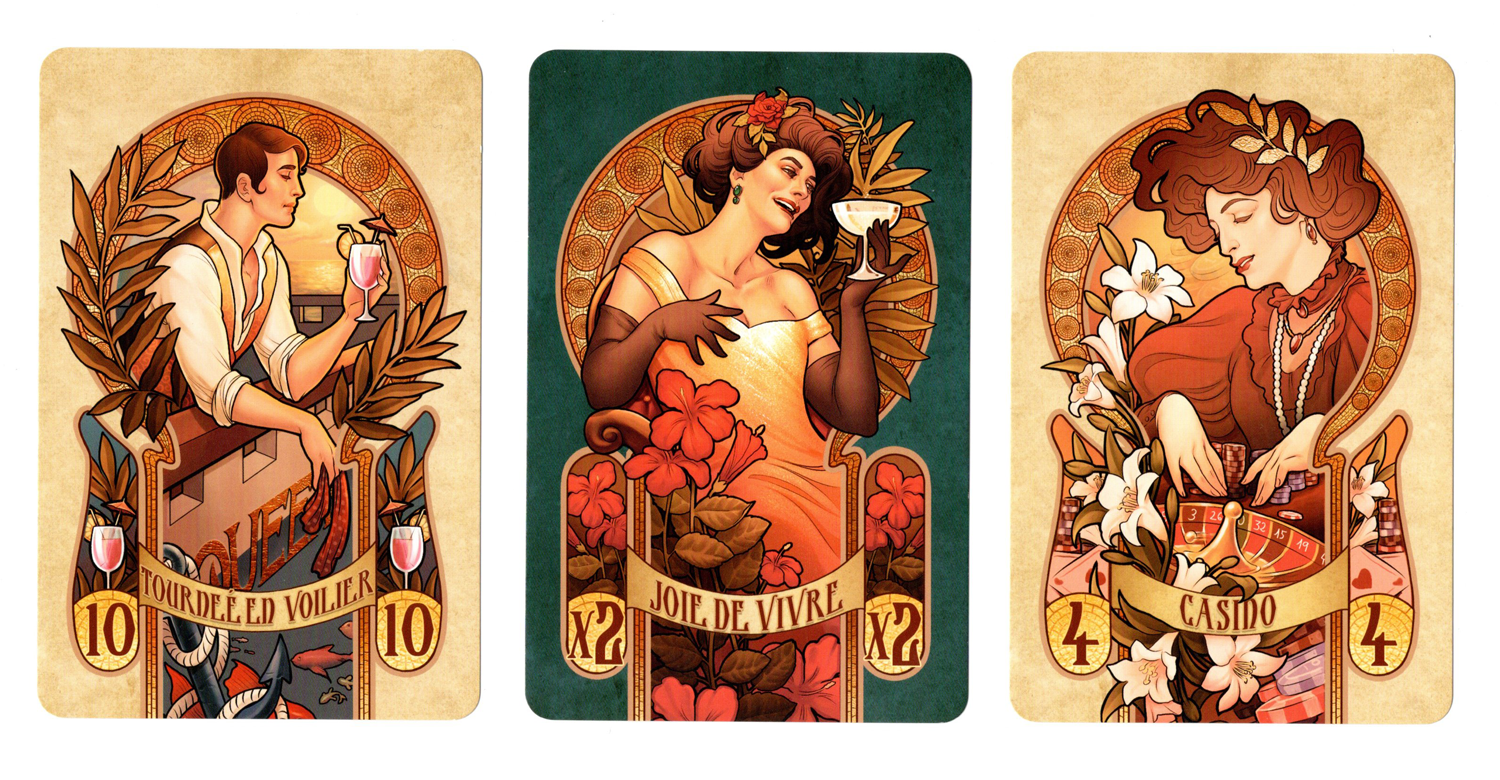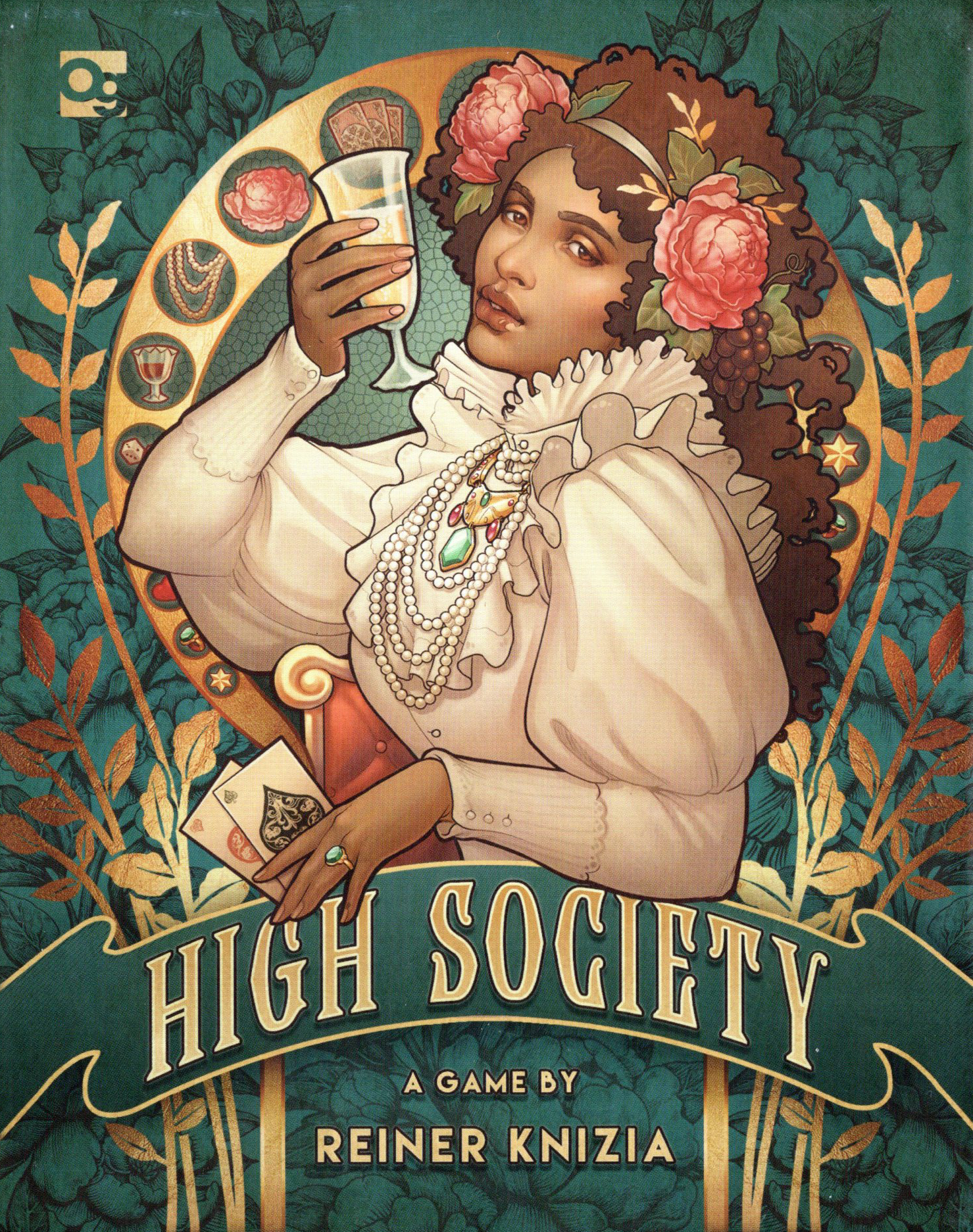High Society Review
High Society transports you back to the opulence of the early twentieth century. You are part of the ‘haut monde’ and eager to show that you are ‘bon vivant’ – one who lives well, even if you are actually nouveau riche! As such, you must assert your status and impress your peers to surround yourself in luxury and become the status icon of the era.
This card game is by Dr Reiner Knizia. A portrait of Reiner would hang in most board game designer halls of fame. A Spiel des Jahres winner and runner-up, as well as the winner of Deutscher Spiele Preis four times. Arguably one of the most prolific board game designers of all time with a rather impressive back catalogue of games. ‘Lord of the Rings’, ‘Keltis’, ‘Lost Cities’, ‘Samurai’, ‘Through the Desert’, ‘Modern Art’ and ‘Tigris and Euphrates’ are all his. Many of his older titles are now deemed classics and are getting fresh new looks and updates year on year.
High Society was originally published in 1995, but the latest Osprey Games version was released in 2018. Refreshed with large over-sized cards adorned with beautiful new Art Nouveau inspired cards by illustrator Medusa Dollmaker. The versions seem to be the same in gameplay however, which leads us on nicely and rather conveniently into the next part of the review…

Gameplay
The entire card game revolves around an auction mechanic. Most rounds see players bid for luxury cards with varying Victory Points or to avoid the faux pas pitfalls that can bestow upon you from one of three negative cards.
All players start off with the same amount of money in the same denominations. When a luxury card is turned over, one player starts the bidding. You go around the players who can increase their bid or pass. To bid, you lay down your money and announce the value, this money cannot be picked back up until you pass or someone else successfully wins an item. If you pass, you exit the bidding battlefield and take any money that you have bid back into your hand. To win a card you have to have the highest bid with all other players passing. You get the card and you pay your money.
In addition to the luxury cards there are three recognition cards that double your victory points at the end of the game.
The twists of the game come in three ways. Firstly, you do not know when the game will end, it ends when four cards with dark green borders are turned over. This stops you holding out for the better cards. Secondly, the person with the least amount of money at the end is shamed and disqualified as being poor. Finally, there are three negative cards which could halve your score, deduct you points, or lose you a card that you have already purchased. The bidding mechanism for these cards is slightly different. Players bid to not get the card and the first person to pass gets the card, but all other players lose the amount they have bid.
Knizia knows the auction mechanic well using it in Modern Art and Medici prior to High Society. He also used the mechanic later in Ra. Every time he uses it with a slightly different twist but ultimately it is still an auction.

©boardgamereview.co.uk
What it’s like
Seating 3-5 players and playing in under 20 minutes, this game is a great filler or end of night game. Like many of Knizia’s lighter games, this is a simple game with hidden depths. By that I mean that High Society is a breeze to learn with easy instructions and a game you can get out even with non-gamers, but actually the layers sitting below its simplicity are unravelled the more you play.
There is an element of luck to High Society. Mainly surrounding when the game will end and what cards are turned over before that point. For me, this randomises the game to give it replayability and actually adds to the strategy of the game. Without the luck variables the game would lose something and so it is necessary.
Throughout the game you are balancing when to bid and when to pass. Ultimately, you are having to push your luck and hoping that the cards you buy will see you through at the end. Your bidding strategy has to be adaptable and sometimes you are better off buying something big at the start, other games you will want to be mopping up the cheap luxury cards at the end.
The limited denominations of the money and that any money you bid remains on the table, add further complexity. This crucially means that if you bid 10,000 francs, if you want to increase to 12,000 you cannot pick up your 10k and replace it with an 8,000 and a 4,000. This is no problem early on, but if you have spent some of your money you may have to increase your bid by more than you might want, or worse, duck out a bidding battle completely.

©boardgamereview.co.uk
Table Presence
The playing cards are sumptuous. Their oversized nature gives them a bit of table presence while the illustrations by Medusa Dollmaker would’ve made Alphonse Mucha jealous.
The money cards are a little more lack lustre but then who wants to deal in dirty old money when you are a high flier! The colour palette used on the money cards is subtle and subdued, but two of the colours are awfully similar. The rules are clear and nicely laid out. The box is small and does its job – you won’t struggle to find a home for this one!

Final thoughts
High Society is not a game for bargain hunters, those seeking cash in the attic or someone wanting the real deal. This is a game for connoisseurs and collectors so let’s keep the riff raff out!
You have to embrace the auction environment for this to work. Saying your bid amount out loud with a nod of the head, a tap of the nose or a raise of the hand all helps add something to the game.
This could be considered a small box game and as such would travel very well indeed. But don’t be fooled by its stature, for a small box game there is ‘lots’ on offer… an auction play on words to finish!
Key Facts
Number of players: 3 to 5
Board Game Review Recommended Age: 10+
Publisher’s Recommended Age: 10 +
Playing Time: 15-25 minutes
Setting Up and Take Down Time: 1 minute
Designers: Dr Reiner Knizia
Publisher: Osprey Games
RRP: £14.99
Summary
This is a good little filler card game. Like a lot of Knizia’s games this is easy to pick up and play. The more you do play however, the more you discover the hidden strategies that gives High Society a little bit of extra clout. The balancing of budget with a need to get decent cards really plays on your mind and the auction mechanic hurries the decision making process in a very natural way.
-
Artwork and Components
-
Complexity
-
Instructions
-
Interaction
-
Value for Money
Overall
Pros
- Beautiful artwork
- Easy to learn
- Auction mechanic
- Transportable
Cons
- Elements of luck
- A lighter game
- The colour of the money
Need more games?
If you already own High Society and enjoy it, or are looking for other inspiration, you might also like these similar games:
- Modern Art
- Ra
- 5 Towers
- Furnace
Buy High Society
If you want to buy High Society after reading our review click on one of our affiliate links below:
(note there has been no affiliate links until this point)
Reviewer’s Note
For clarity. We don’t get paid for our reviews. We purchased this game with our own money, this has not affected our review in any way.
We may however earn a tincy wincy commission if you buy a game having clicked one of our affiliate links like the one above… this hopefully gives us a bit of pocket money towards hosting costs and new games to review!
As an Amazon Associate I earn from qualifying purchases.
Board Game Review is a brand ambassador for Out of Town Games.
We also are an affiliate of Board Game Prices, a price comparison website for Board Games.
These affiliate advertising programs are designed to provide a means for sites to earn advertising fees by advertising and linking to their websites.





